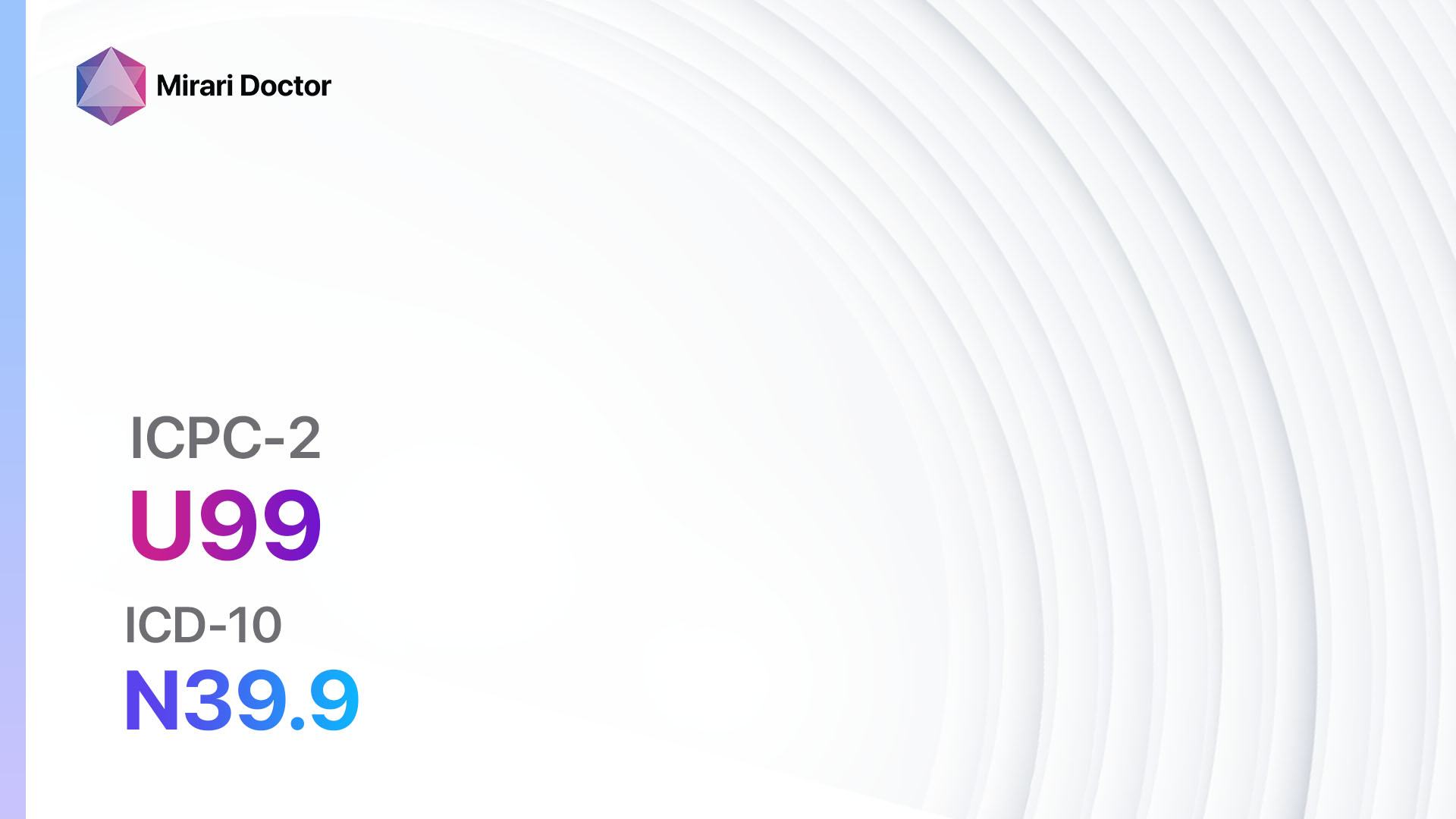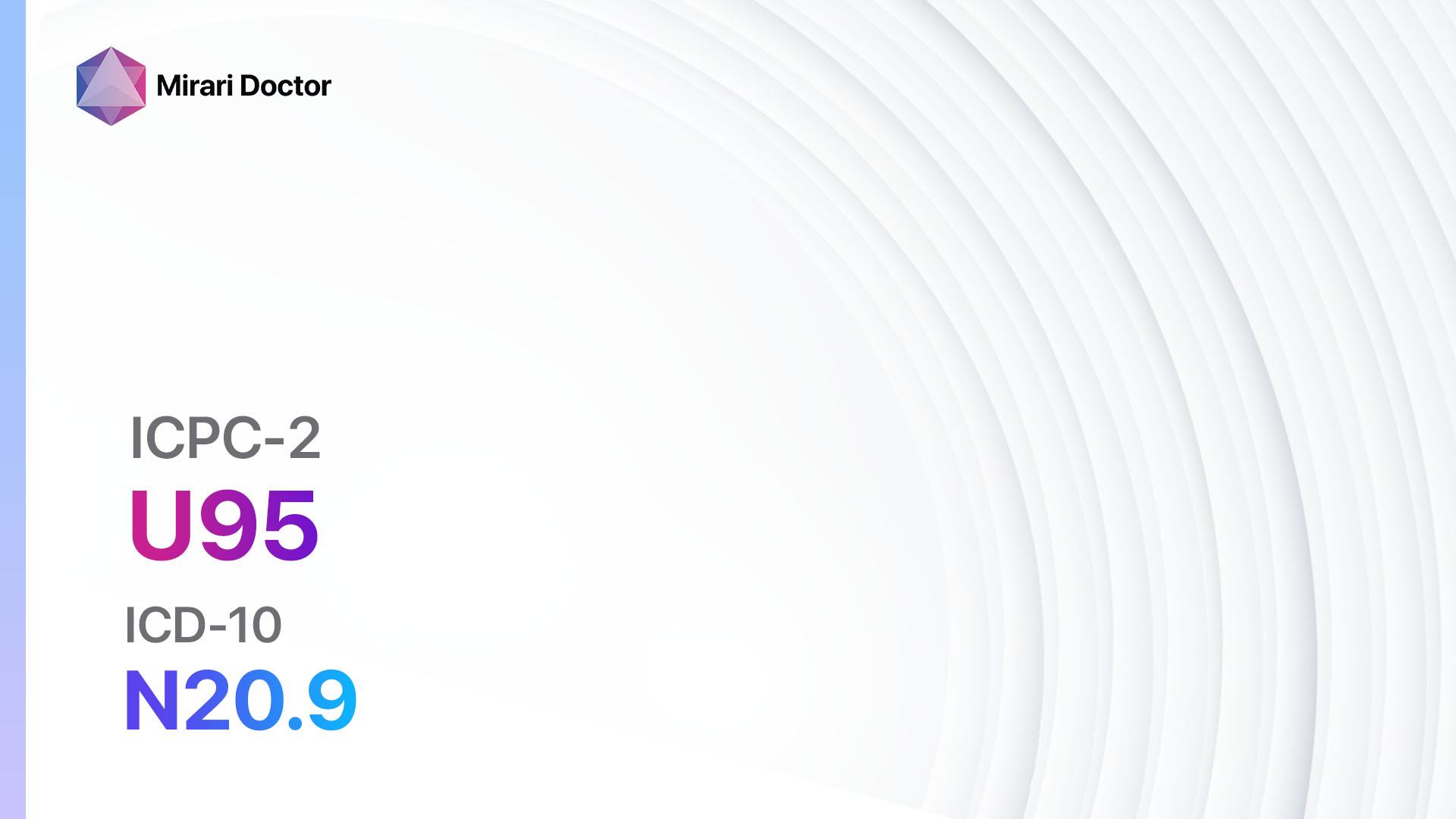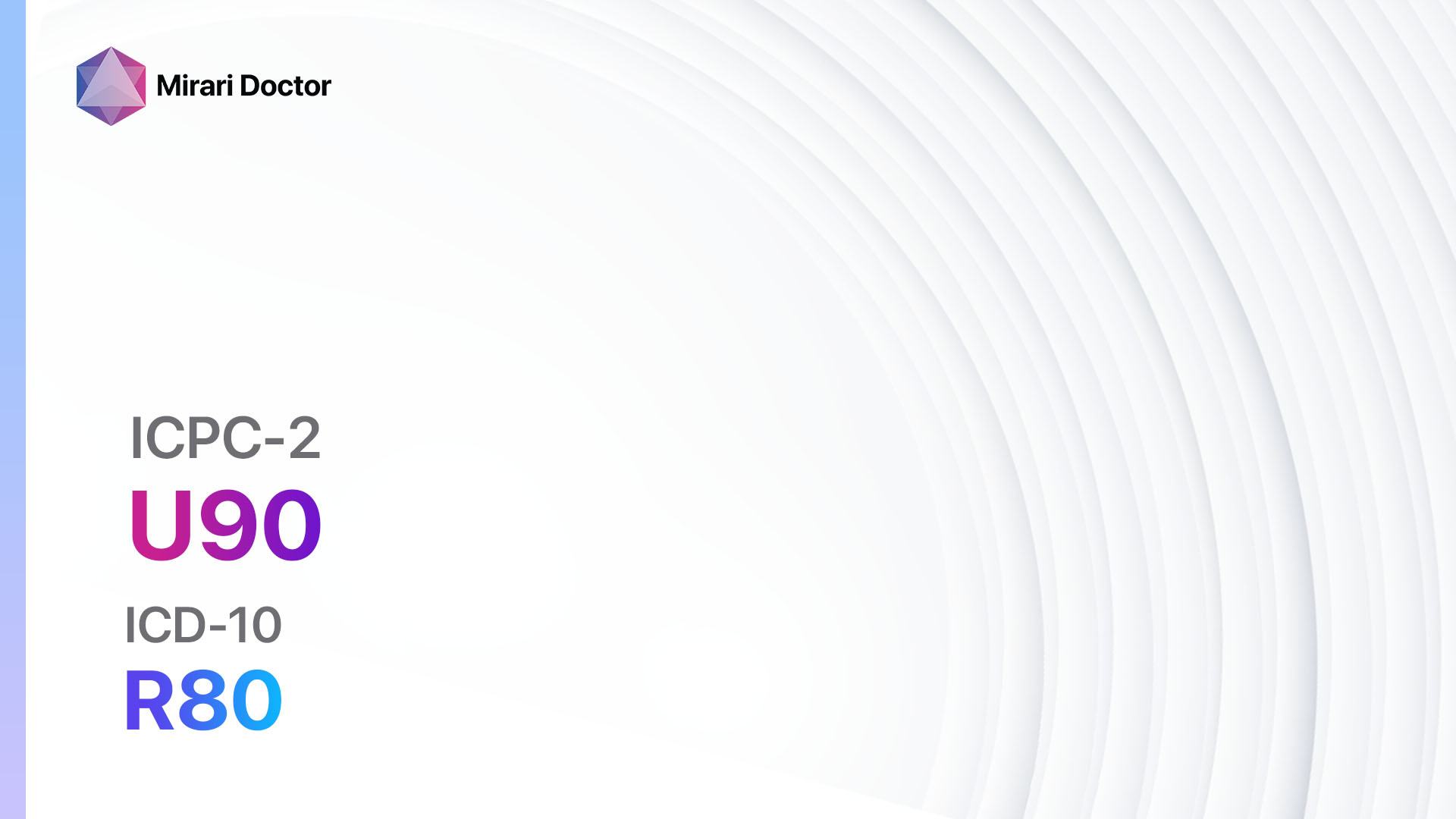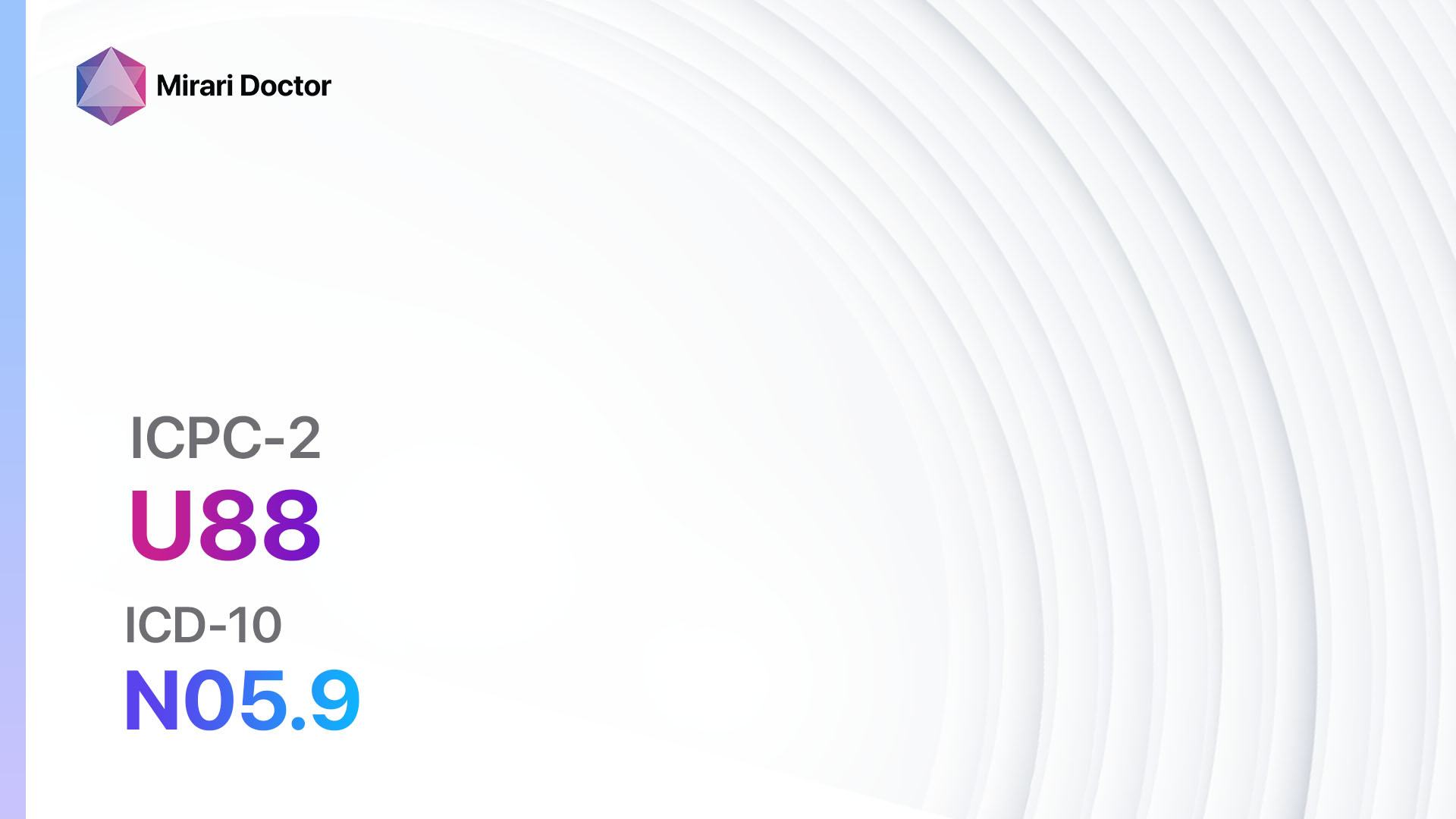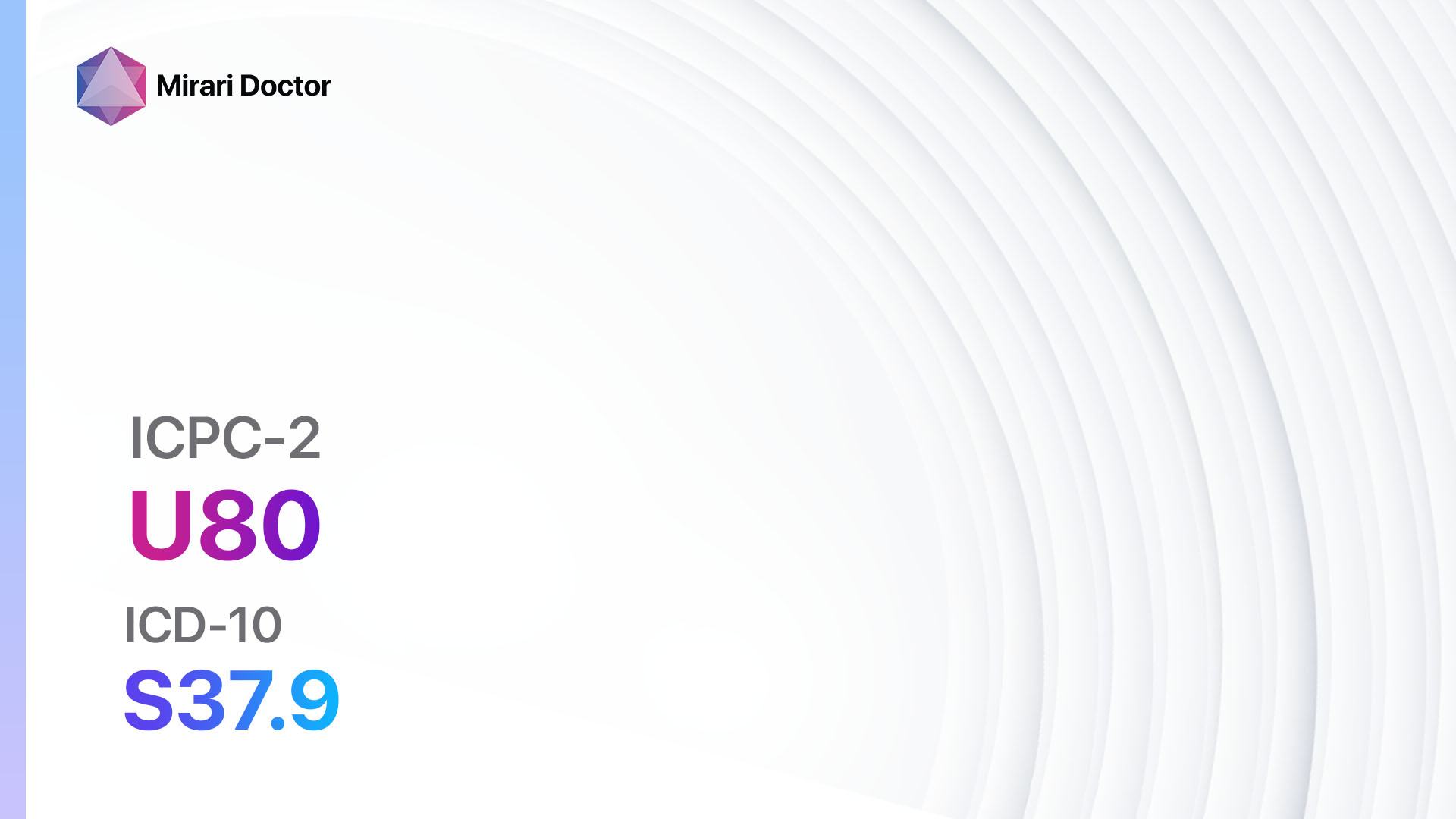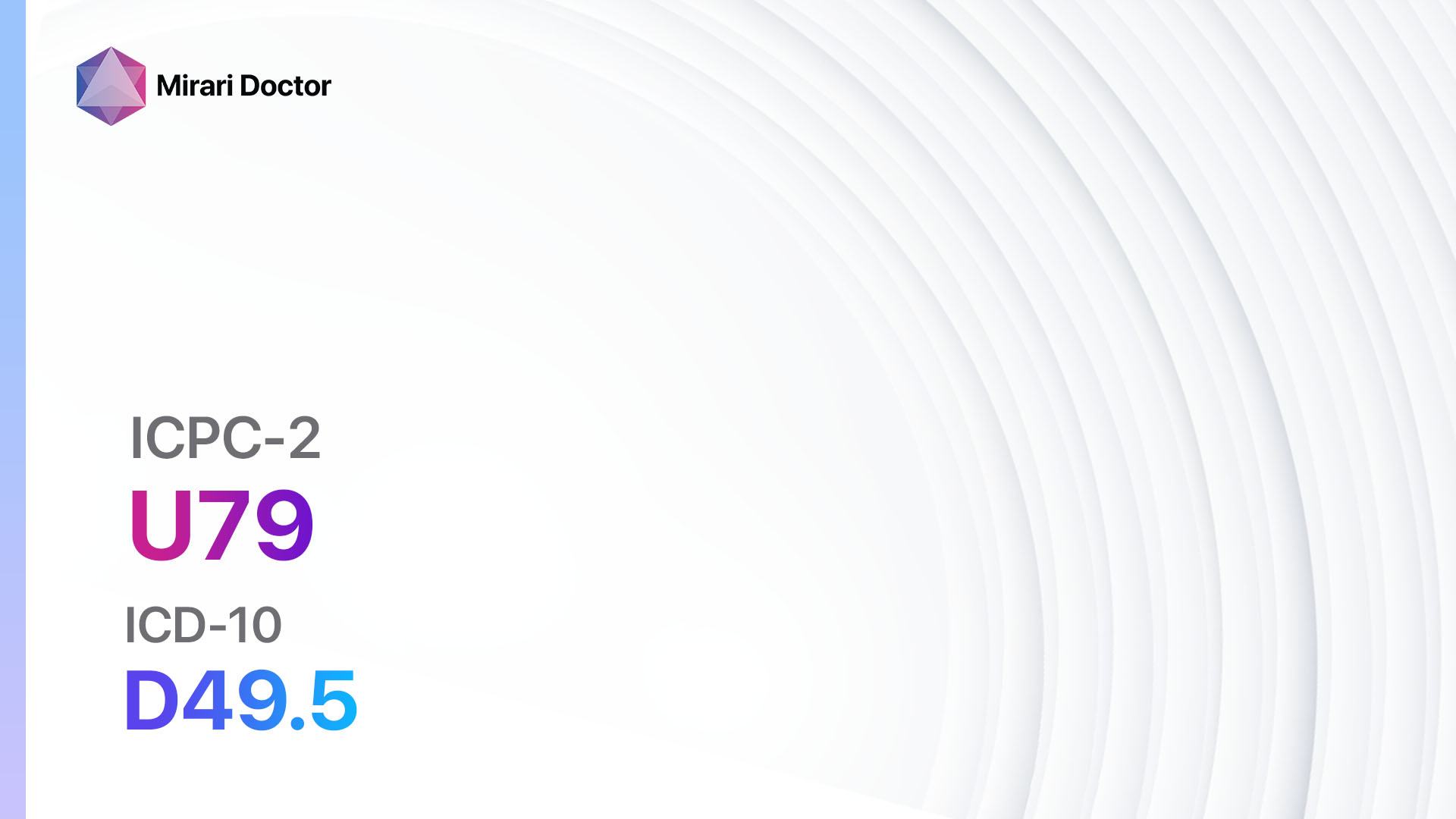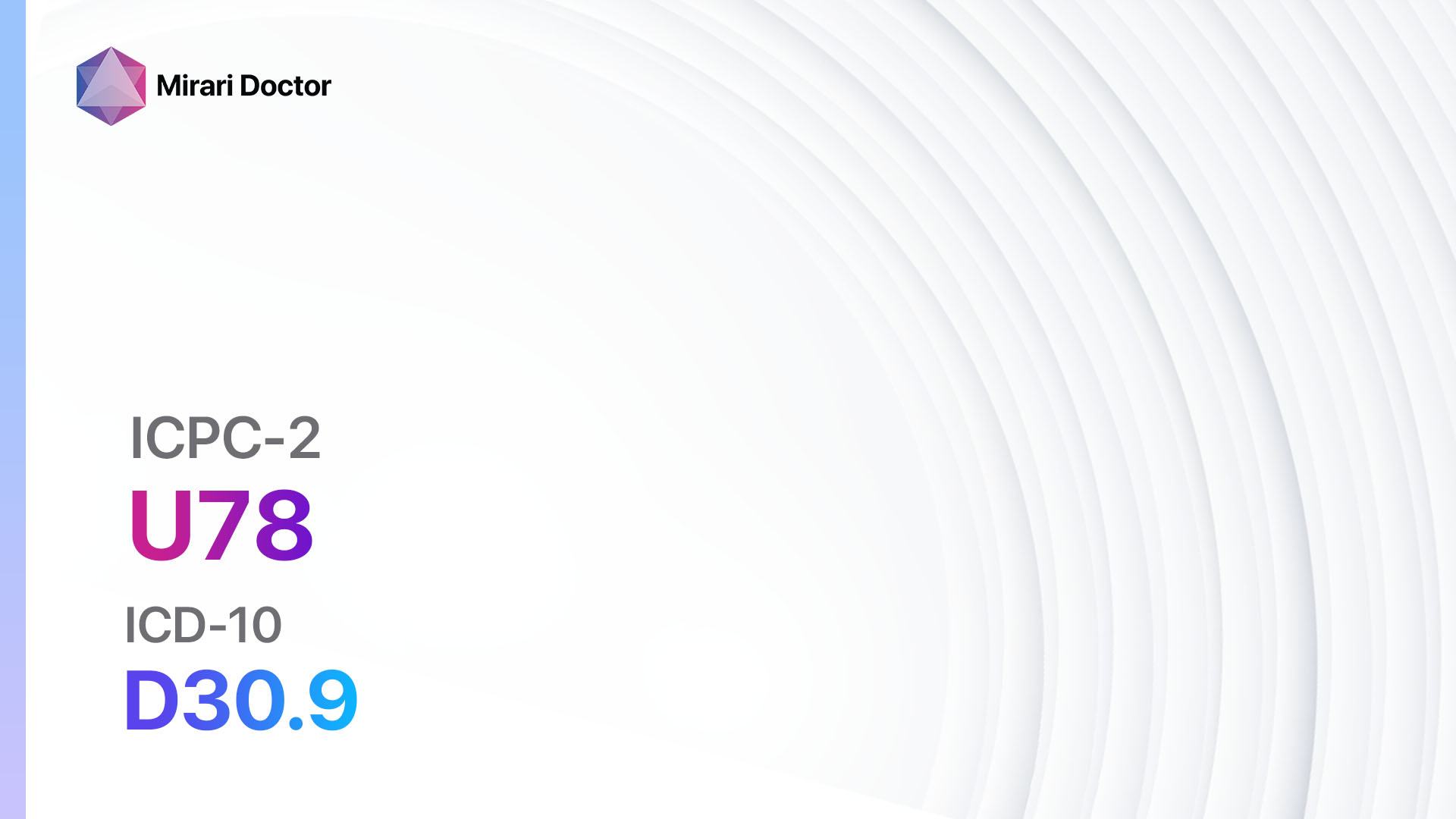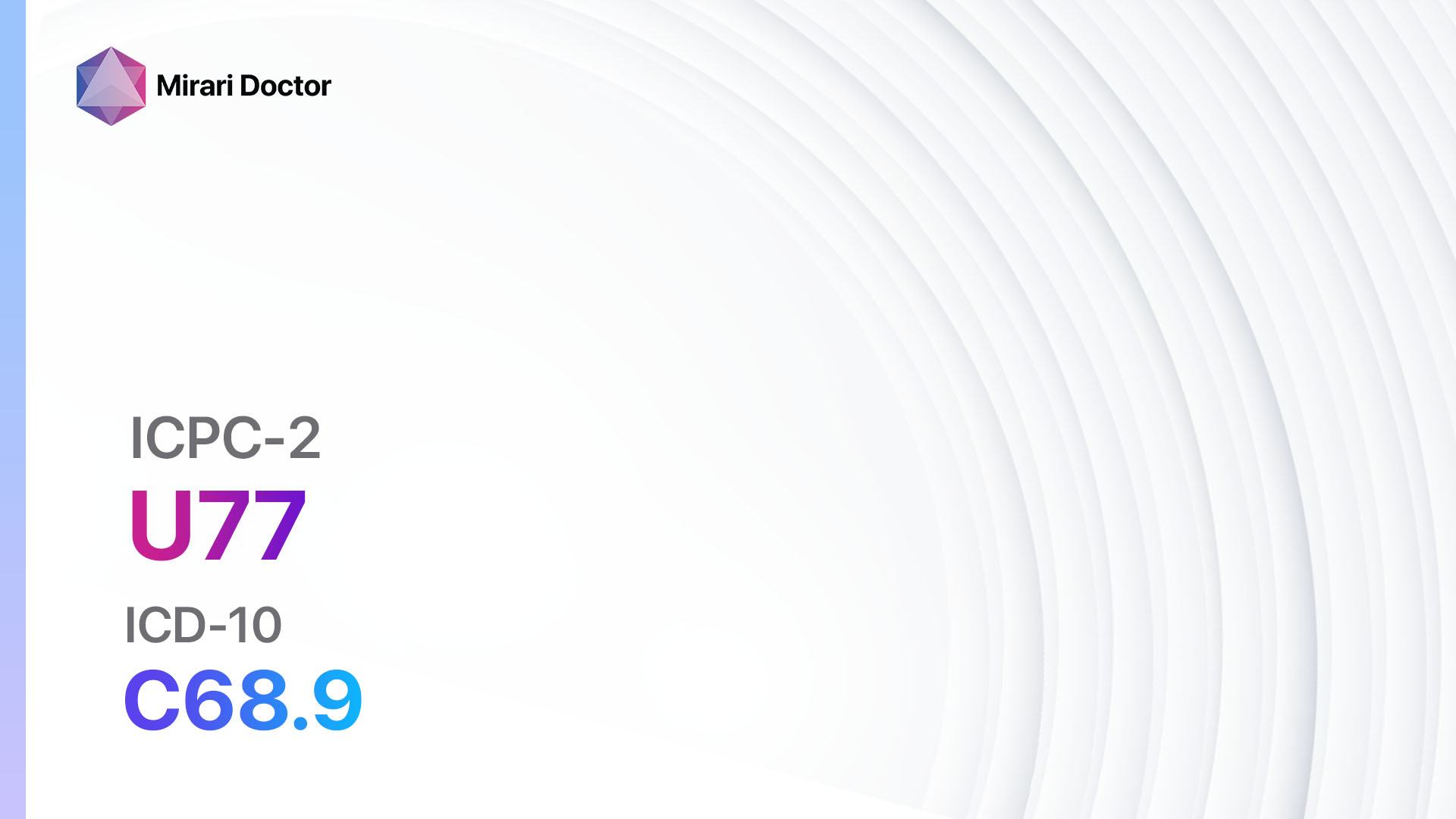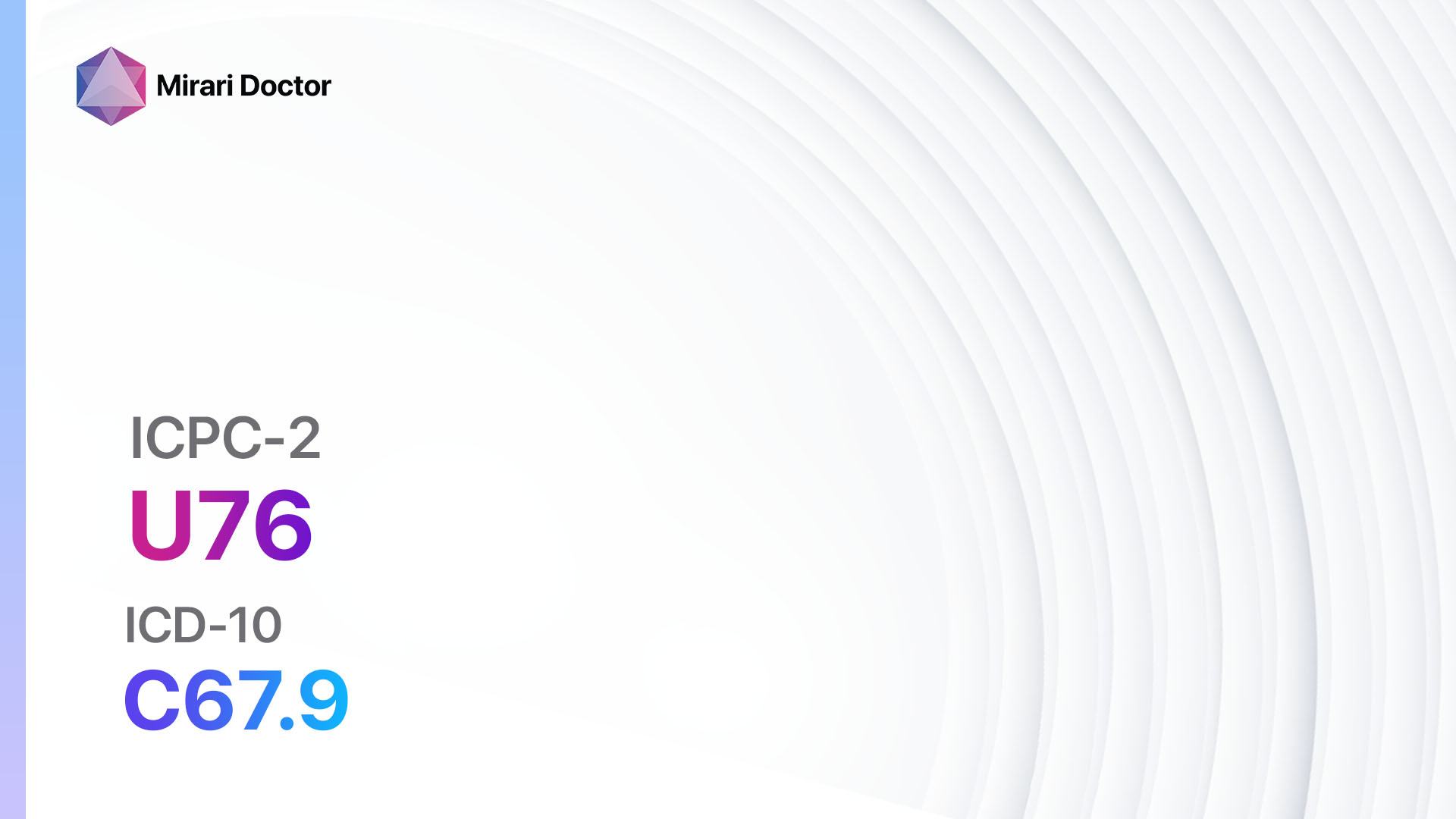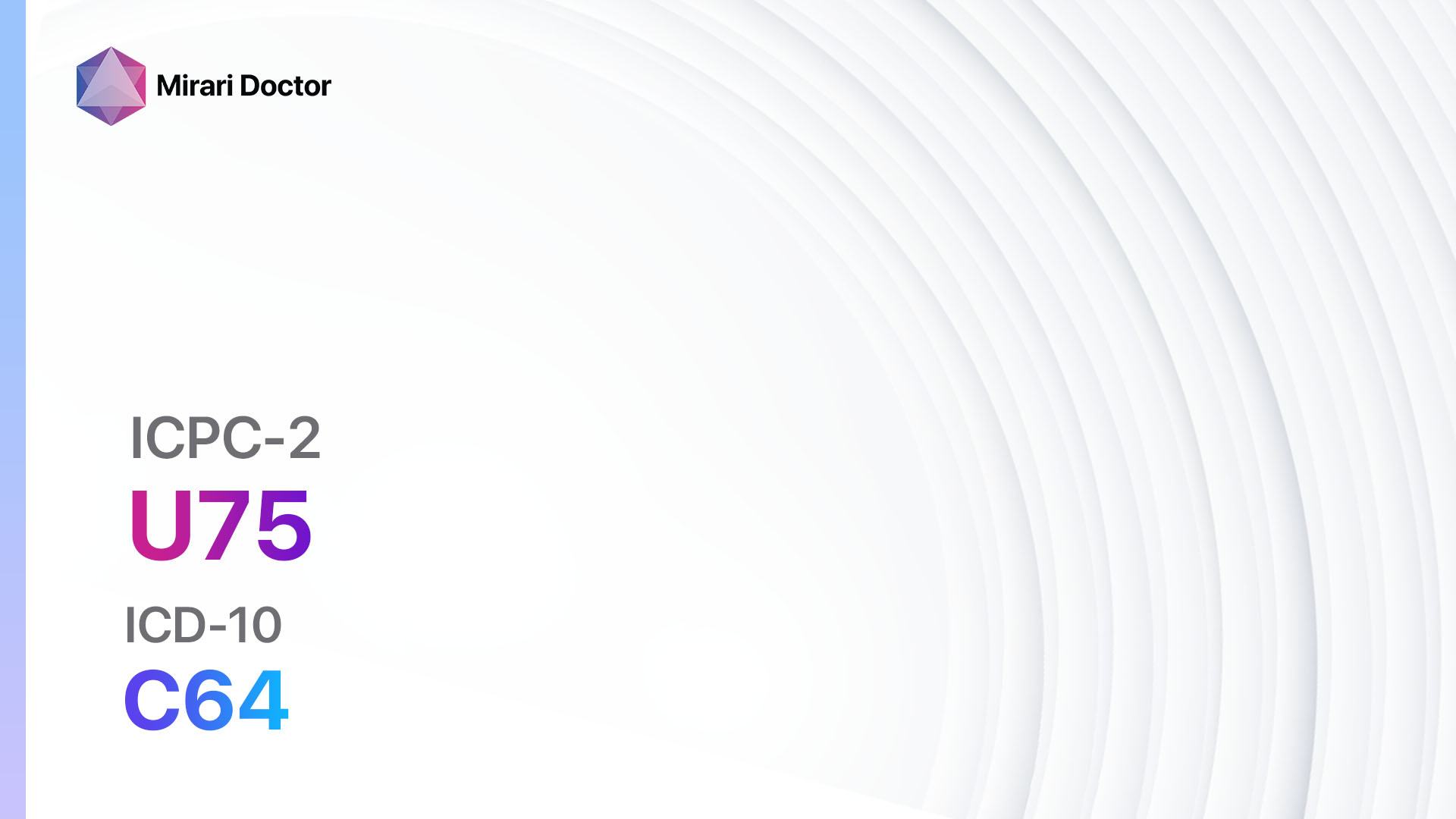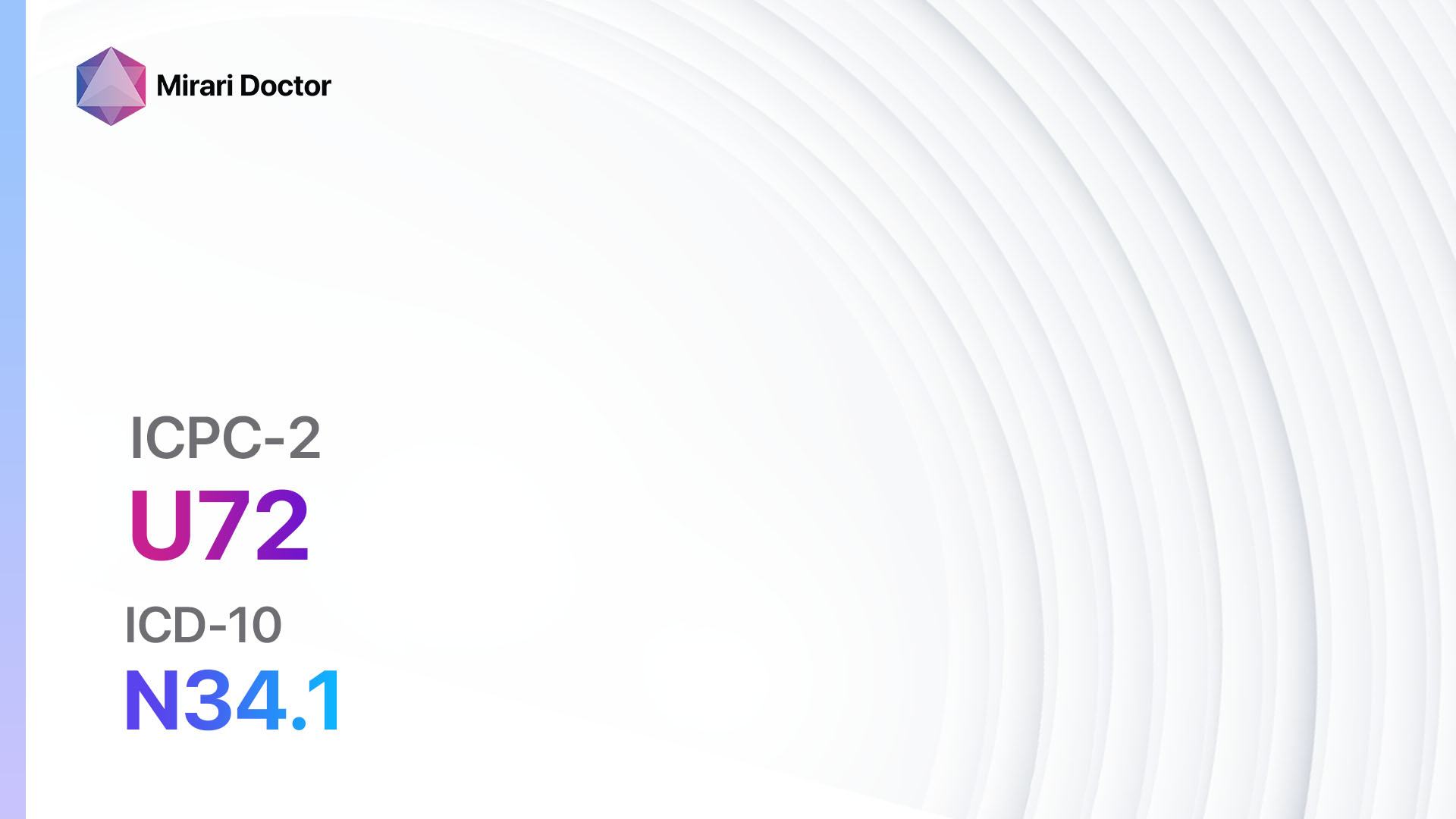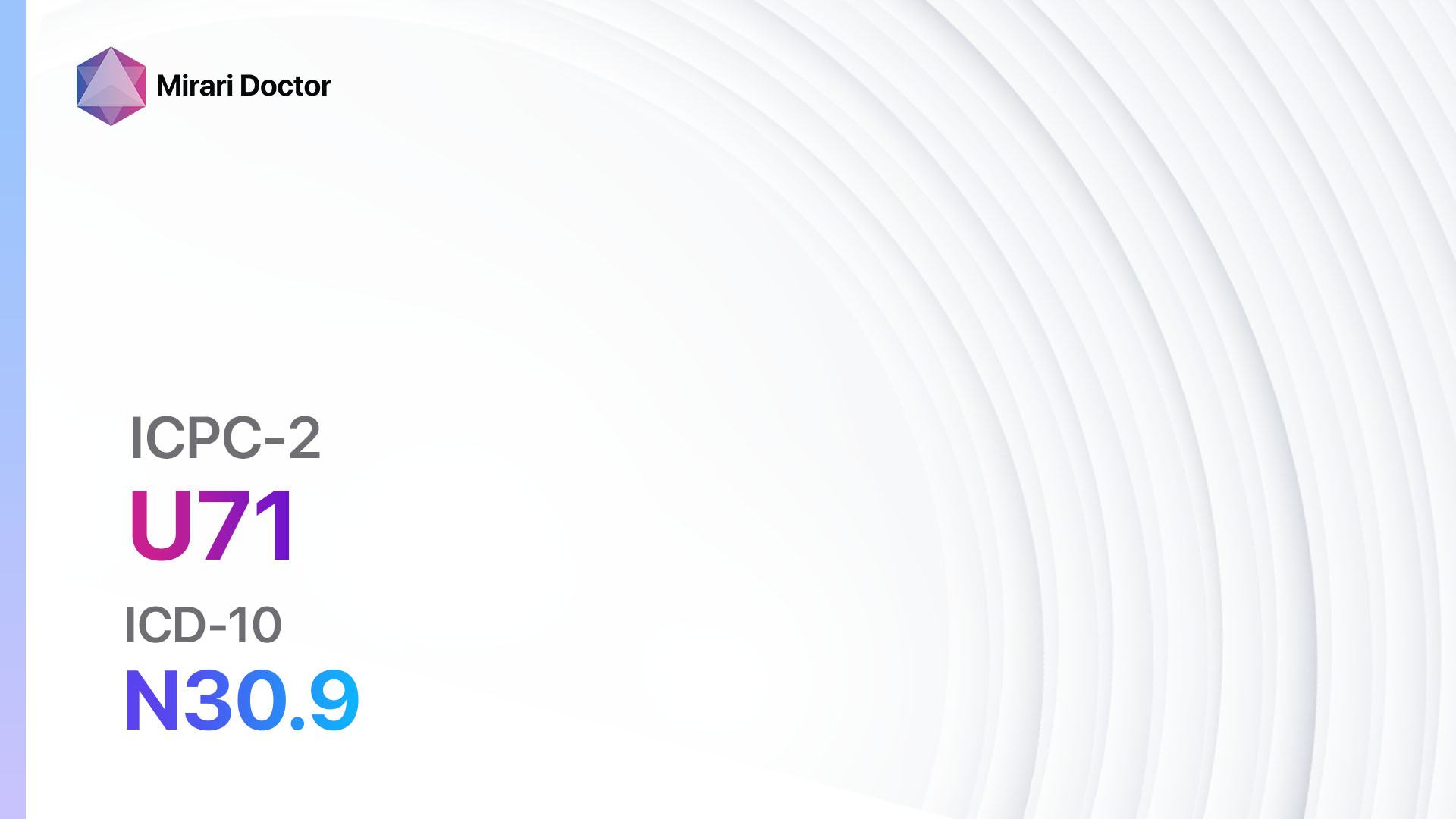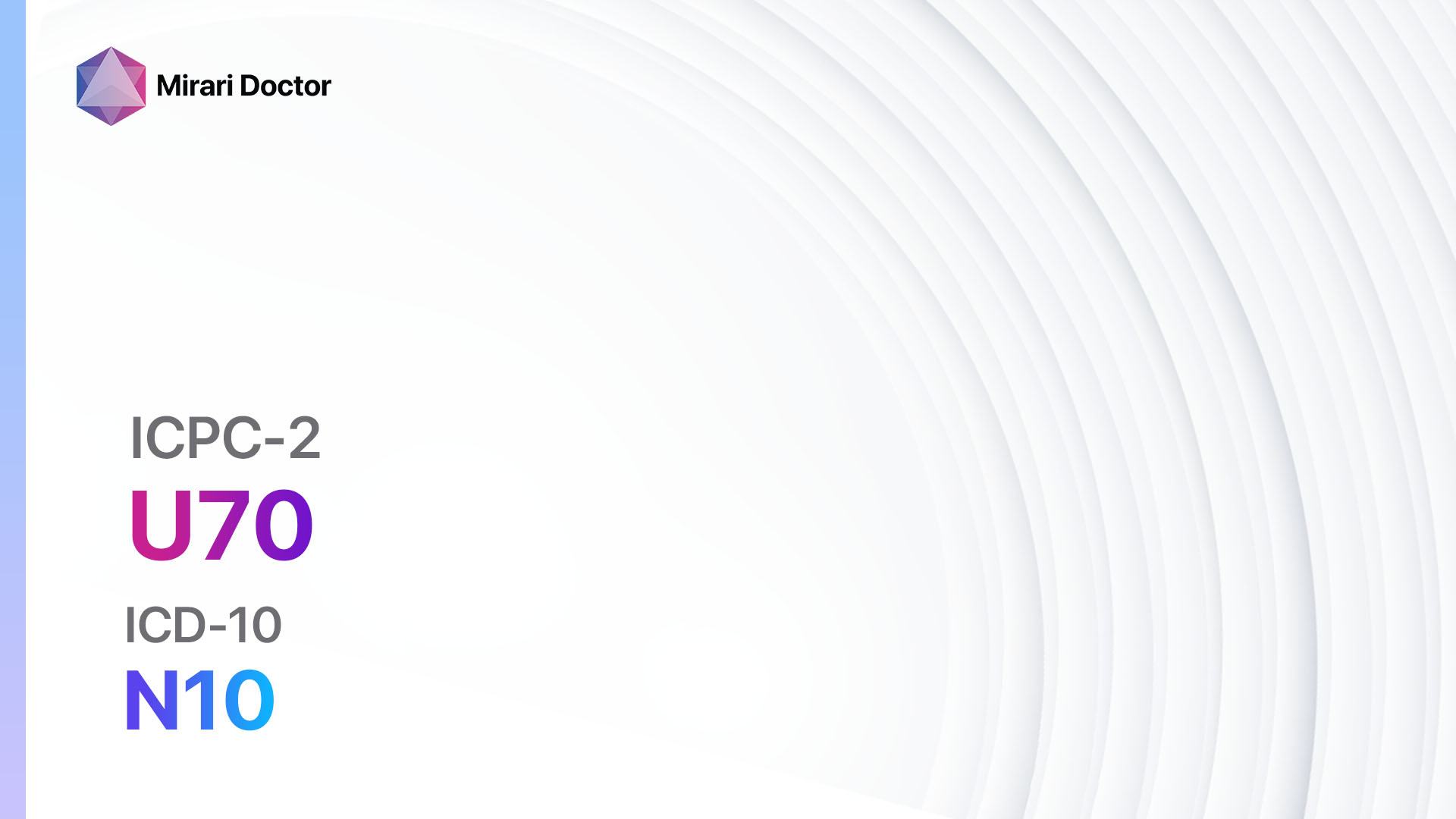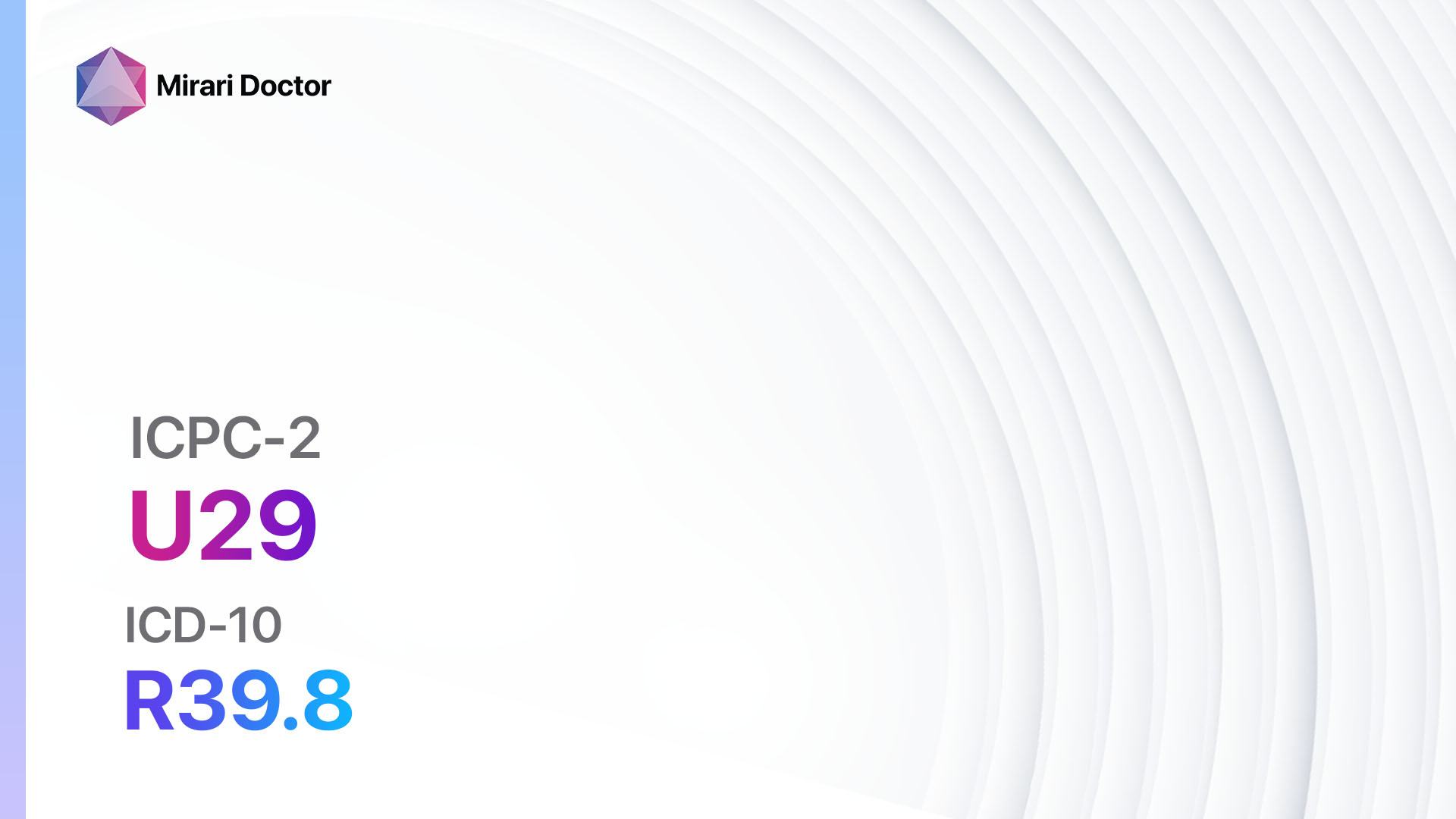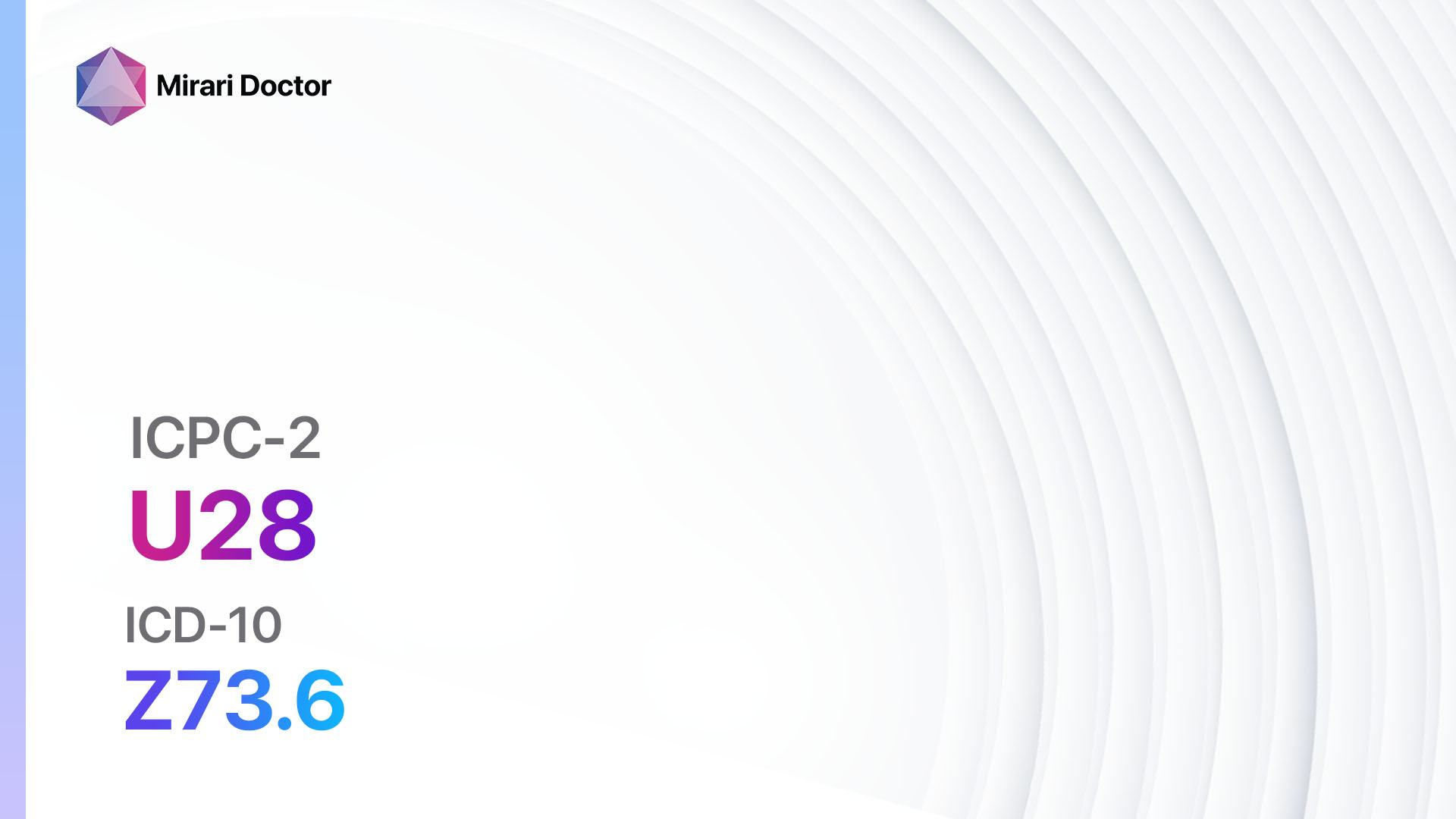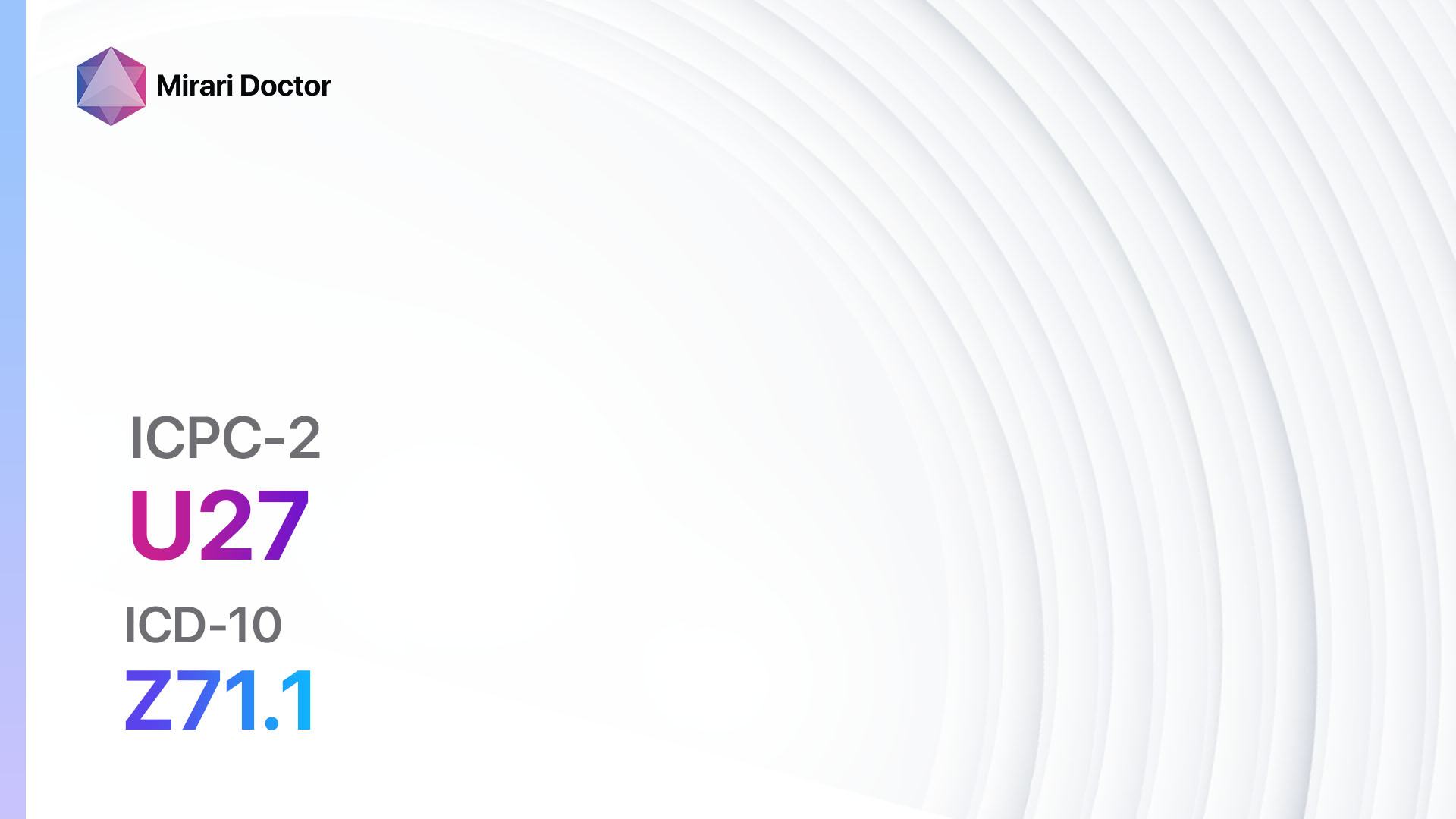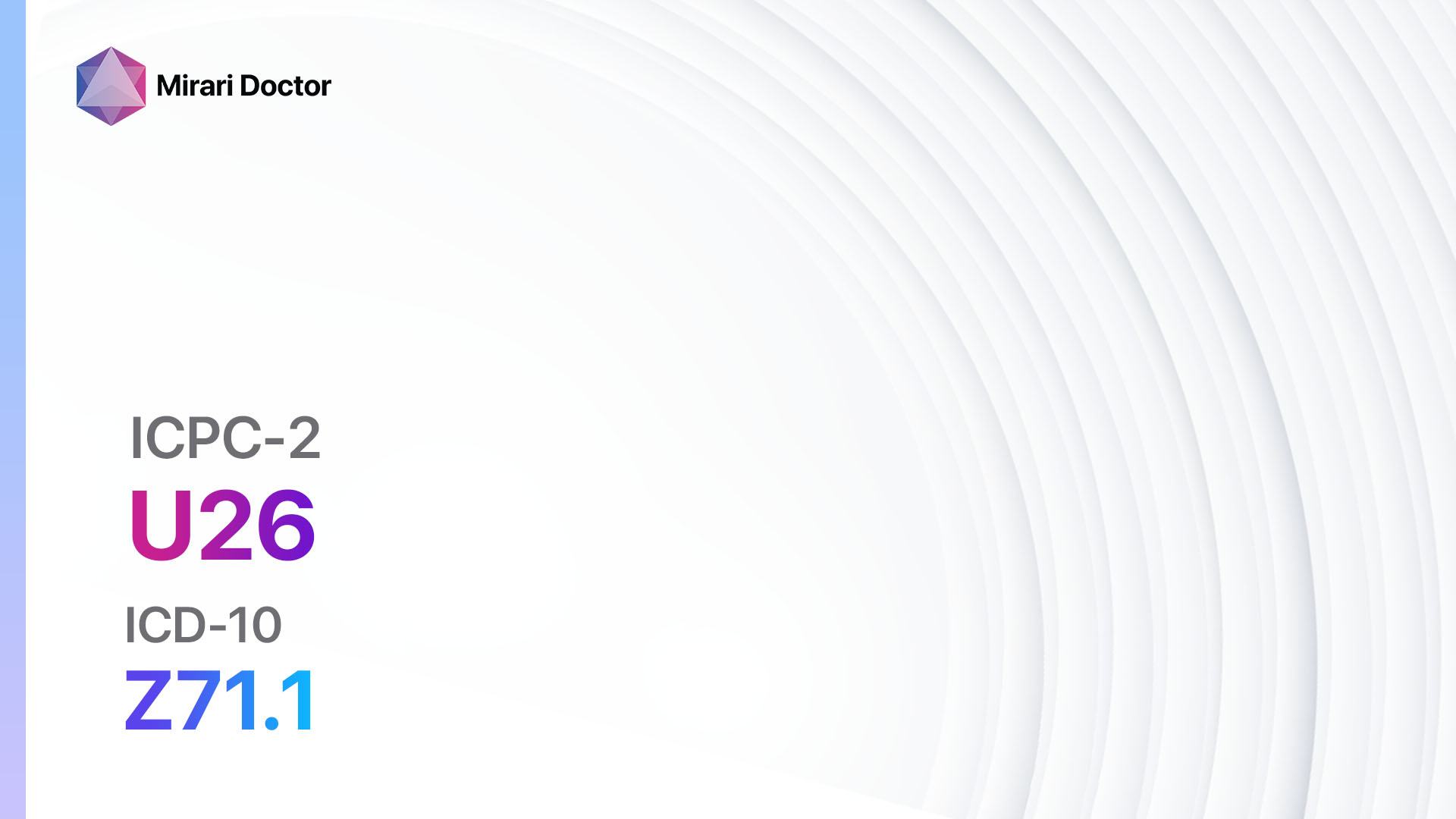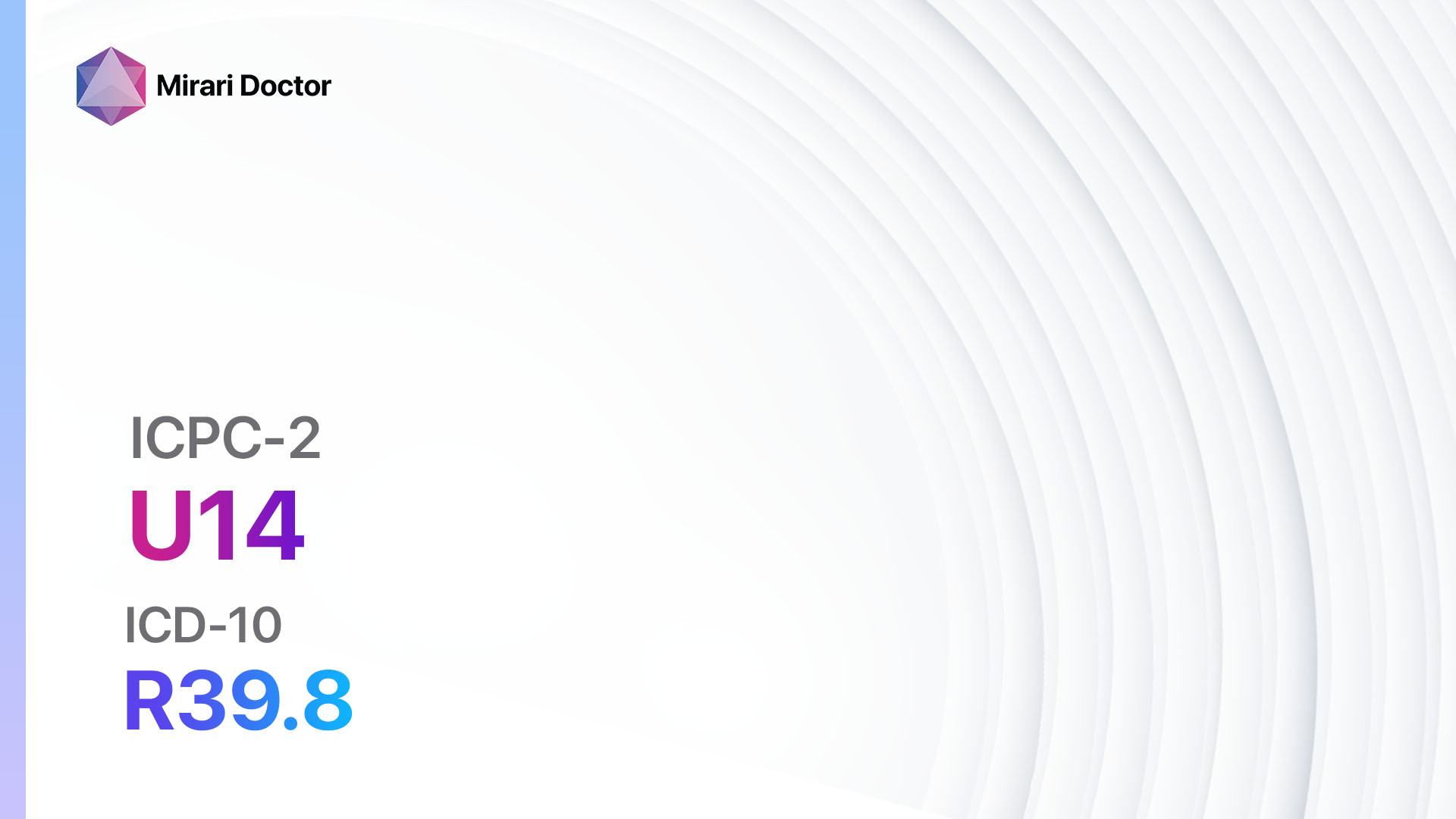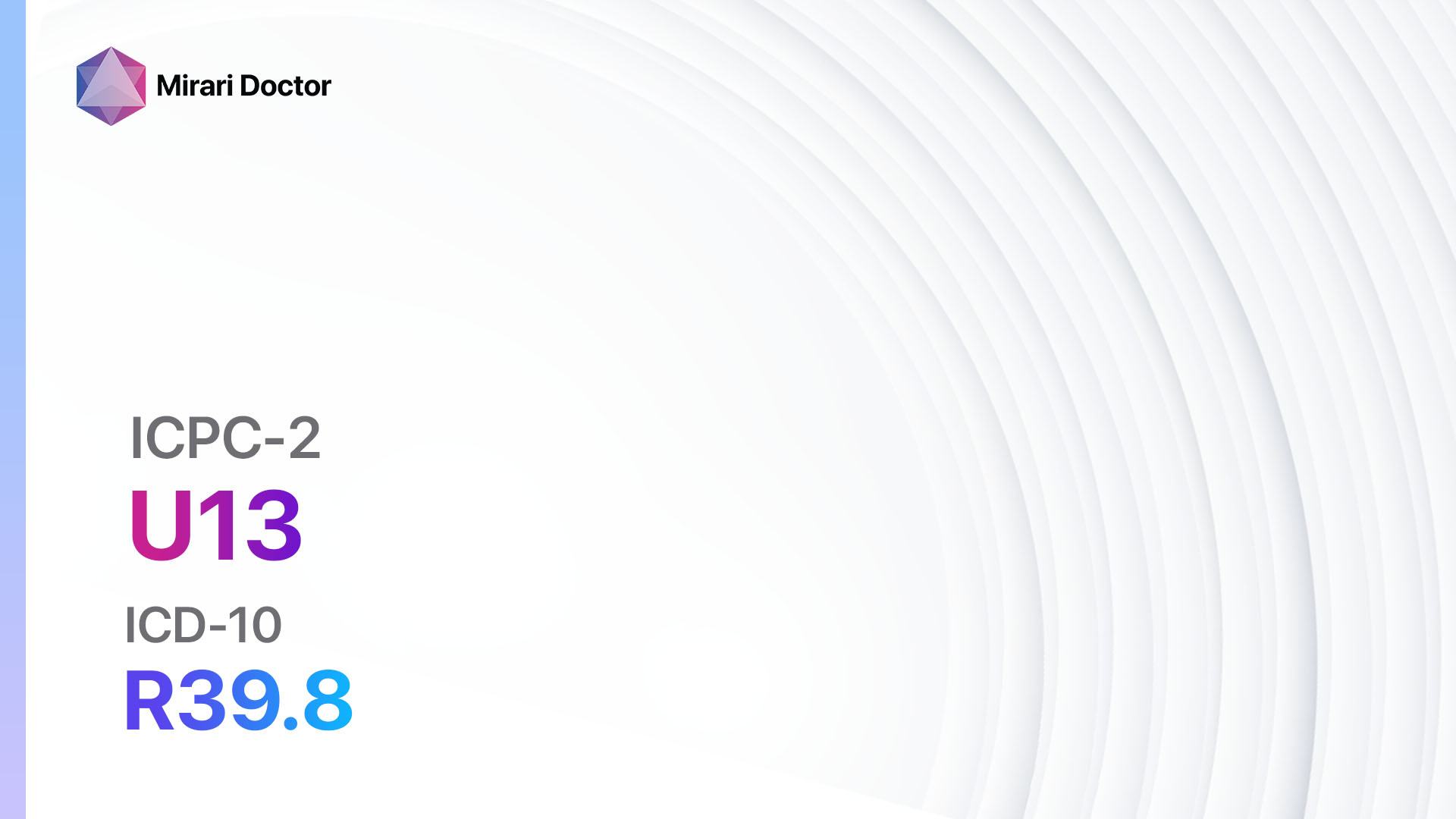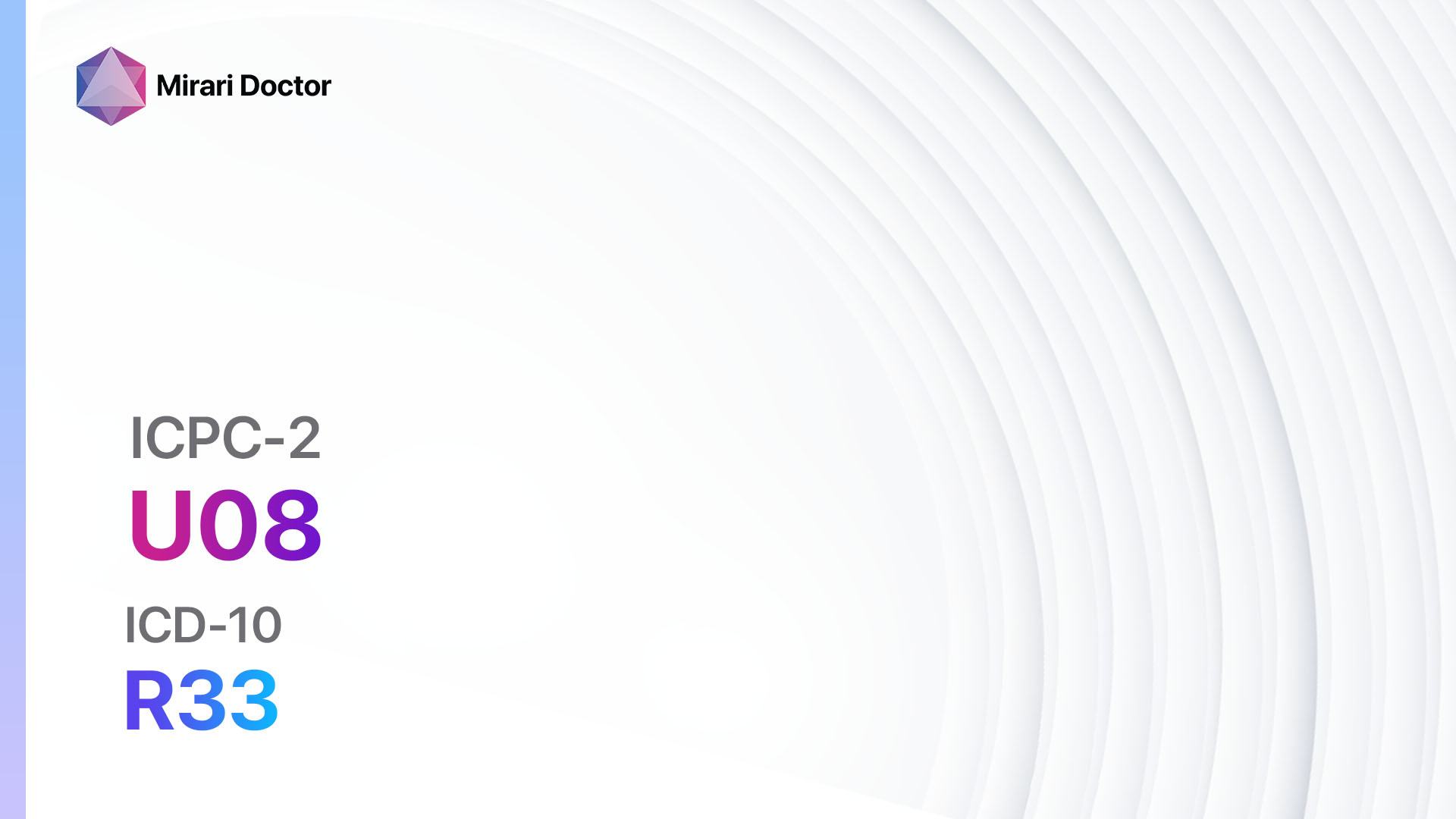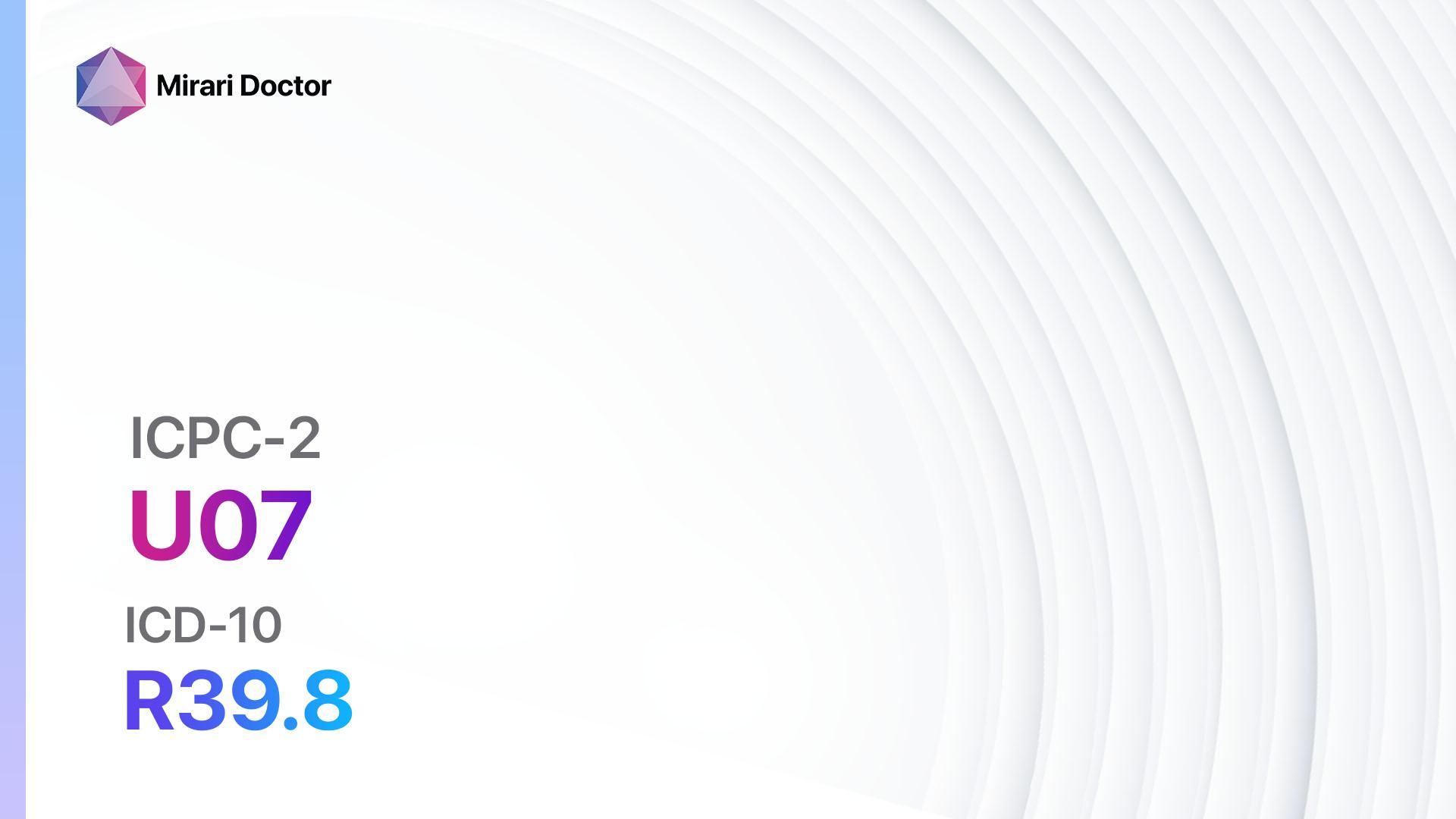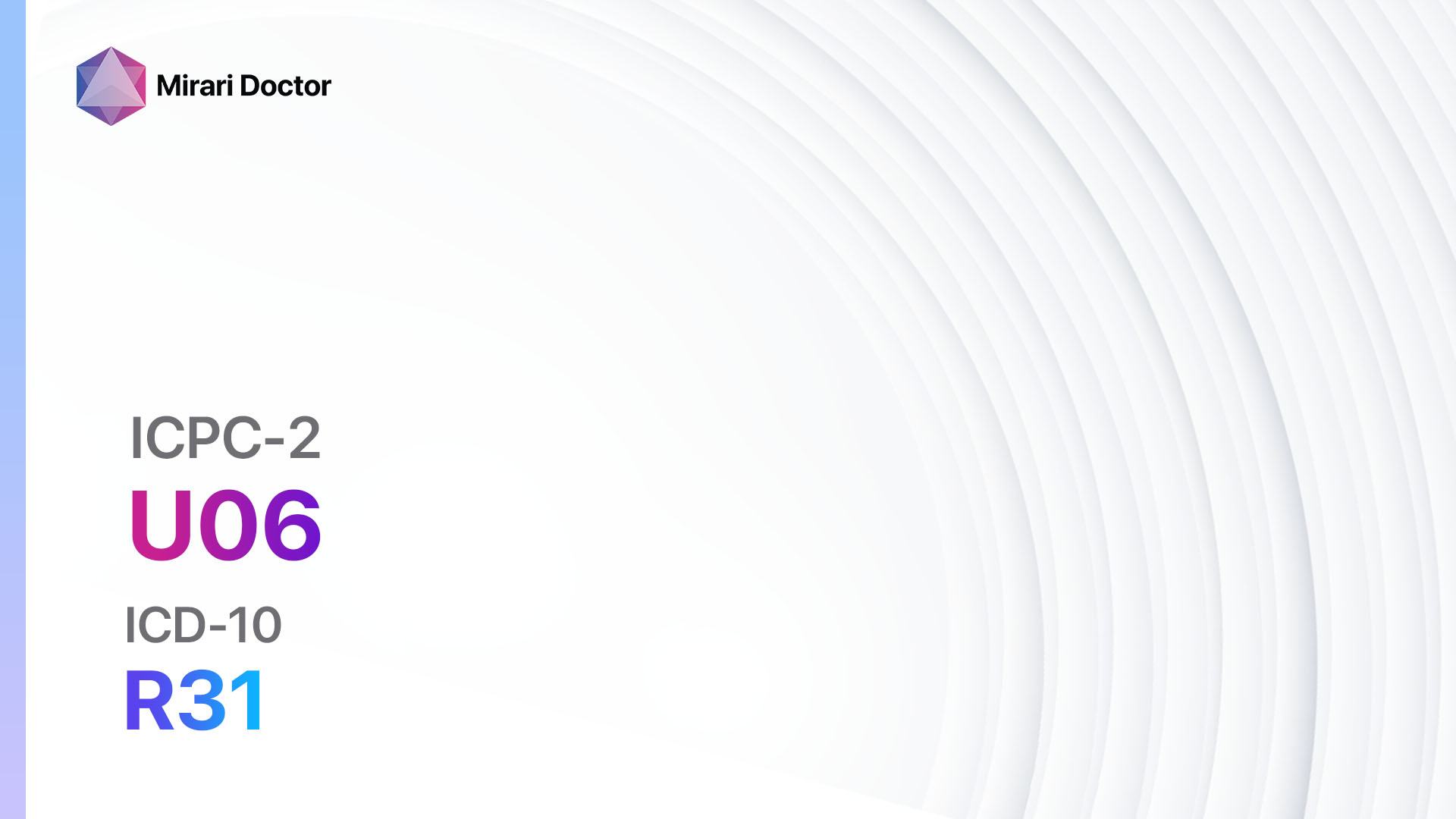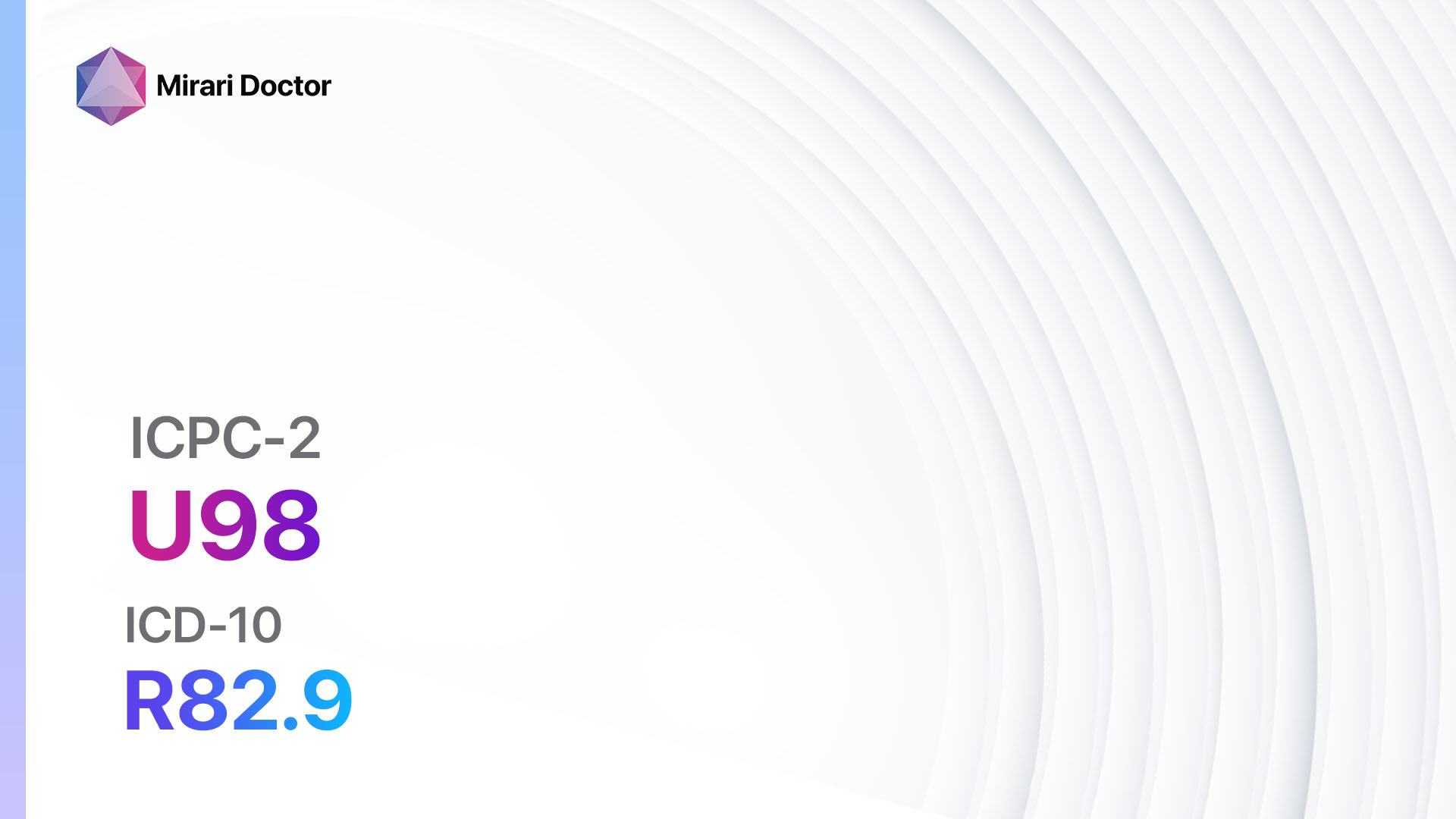
Introduction
Abnormal urine test NOS refers to an abnormal result in a urine test that does not have a specific diagnosis attached to it. It is a common finding in clinical practice and can be indicative of various underlying conditions[1]. The aim of this guide is to provide a step-by-step approach to diagnosing and managing patients with abnormal urine test NOS.
Codes
- ICPC-2 Code: U98 Abnormal urine test NOS
- ICD-10 Code: R82.9 Unspecified abnormal finding in urine[2]
Symptoms
- Increased frequency of urination: Patients may experience a need to urinate more frequently than usual.
- Pain or discomfort during urination: Patients may experience pain, burning, or discomfort while urinating[3].
Causes
- Urinary tract infection (UTI): Bacterial infection of the urinary tract can cause abnormal urine test results.
- Kidney stones: The presence of kidney stones can lead to abnormal urine test results.
- Bladder or kidney infection: Infections of the bladder or kidneys can cause abnormalities in urine test results[4].
Diagnostic Steps
Medical History
- Gather information about the patient’s symptoms, including the frequency of urination and any pain or discomfort during urination.
- Ask about any previous history of urinary tract infections, kidney stones, or bladder/kidney infections.
- Inquire about any other medical conditions or medications that may be contributing to the abnormal urine test results[5].
Physical Examination
- Perform a thorough physical examination, including a pelvic exam for women and a rectal exam for men, to assess for any abnormalities in the urinary tract.
- Look for signs of infection, such as fever or tenderness in the lower abdomen[6].
Laboratory Tests
- Urinalysis: A urine sample will be analyzed for the presence of bacteria, blood, or other abnormalities.
- Urine culture: If a urinary tract infection is suspected, a urine culture will be performed to identify the specific bacteria causing the infection and determine the most appropriate antibiotic treatment[7].
Diagnostic Imaging
- Ultrasound: An ultrasound of the kidneys and bladder may be performed to assess for any structural abnormalities or the presence of kidney stones.
- CT scan: In some cases, a CT scan may be ordered to provide a more detailed view of the urinary tract and identify any abnormalities[8].
Other Tests
- Cystoscopy: If other diagnostic tests are inconclusive, a cystoscopy may be performed to directly visualize the bladder and urethra for any abnormalities or signs of infection[9].
Follow-up and Patient Education
- Schedule a follow-up appointment to review the results of the diagnostic tests and discuss further management options.
- Provide education to the patient about the importance of maintaining good urinary tract health, including proper hydration and hygiene practices[10].
Possible Interventions
Traditional Interventions
Medications:
Top 5 drugs for abnormal urine test NOS:
- Antibiotics (e.g., Ciprofloxacin, Trimethoprim/sulfamethoxazole):
- Cost : Generic versions can be $3-$50/month.
- Contraindications : Hypersensitivity to the medication.
- Side effects : Nausea, diarrhea, rash.
- Severe side effects : Severe allergic reactions, tendon rupture.
- Drug interactions: Warfarin, antacids.
- Warning : Finish the full course of antibiotics as prescribed.
- Pain relievers (e.g., Ibuprofen, Acetaminophen):
- Cost : Generic versions can be $3-$10/month.
- Contraindications : Allergy to the medication, history of stomach ulcers.
- Side effects : Upset stomach, dizziness.
- Severe side effects : Liver damage, allergic reactions.
- Drug interactions: Blood thinners, other pain relievers.
- Warning : Take with food to minimize stomach upset.
- Alpha-blockers (e.g., Tamsulosin, Terazosin):
- Cost : Generic versions can be $10-$50/month.
- Contraindications : Hypersensitivity to the medication, severe liver disease.
- Side effects : Dizziness, low blood pressure.
- Severe side effects : Fainting, priapism.
- Drug interactions: Other blood pressure medications.
- Warning : Take medication at bedtime to minimize dizziness.
- Antispasmodics (e.g., Oxybutynin, Tolterodine):
- Cost : Generic versions can be $10-$50/month.
- Contraindications : Urinary retention, narrow-angle glaucoma.
- Side effects : Dry mouth, constipation.
- Severe side effects : Difficulty urinating, hallucinations.
- Drug interactions: Other anticholinergic medications.
- Warning : Avoid alcohol and other sedating medications.
- Diuretics (e.g., Hydrochlorothiazide, Furosemide):
- Cost : Generic versions can be $3-$10/month.
- Contraindications : Allergy to the medication, anuria.
- Side effects : Increased urination, low potassium levels.
- Severe side effects : Dehydration, electrolyte imbalances.
- Drug interactions: Lithium, other blood pressure medications.
- Warning : Monitor blood pressure and potassium levels regularly.
Alternative Drugs:
- Herbal supplements (e.g., Cranberry extract): Some herbal supplements may have potential benefits for urinary tract health. Cost: Varies depending on the specific supplement.
- Probiotics: Probiotics may help restore the balance of bacteria in the urinary tract. Cost: Varies depending on the specific product.
Surgical Procedures:
- In some cases, surgical intervention may be necessary to address underlying structural abnormalities or remove kidney stones. The cost of surgical procedures can vary widely depending on the specific procedure and location. It is recommended to consult with a urologist for further evaluation and discussion of surgical options.
Alternative Interventions
- Acupuncture: May help improve urinary tract health and reduce symptoms. Cost: $60-$120 per session.
- Herbal supplements: Some herbs, such as uva ursi and dandelion root, may have potential benefits for urinary tract health. Cost: Varies depending on the specific supplement.
- Probiotics: Probiotic supplements may help restore the balance of bacteria in the urinary tract. Cost: Varies depending on the specific product.
Lifestyle Interventions
- Hydration: Drinking an adequate amount of water can help flush out bacteria and maintain urinary tract health. Cost: Free.
- Good hygiene practices: Proper hygiene, including wiping from front to back after using the toilet, can help prevent urinary tract infections. Cost: Free.
- Avoiding irritants: Avoiding irritants such as caffeine, alcohol, and spicy foods may help reduce symptoms. Cost: Varies depending on individual preferences.
It is important to note that the cost ranges provided are approximate and may vary depending on the location and availability of the interventions. It is recommended to consult with a healthcare professional for personalized recommendations and cost estimates.
Mirari Cold Plasma Alternative Intervention
Understanding Mirari Cold Plasma
- Safe and Non-Invasive Treatment: Mirari Cold Plasma is a safe and non-invasive treatment option for various skin conditions. It does not require incisions, minimizing the risk of scarring, bleeding, or tissue damage.
- Efficient Extraction of Foreign Bodies: Mirari Cold Plasma facilitates the removal of foreign bodies from the skin by degrading and dissociating organic matter, allowing easier access and extraction.
- Pain Reduction and Comfort: Mirari Cold Plasma has a local analgesic effect, providing pain relief during the treatment, making it more comfortable for the patient.
- Reduced Risk of Infection: Mirari Cold Plasma has antimicrobial properties, effectively killing bacteria and reducing the risk of infection.
- Accelerated Healing and Minimal Scarring: Mirari Cold Plasma stimulates wound healing and tissue regeneration, reducing healing time and minimizing the formation of scars.
Mirari Cold Plasma Prescription
Video instructions for using Mirari Cold Plasma Device – U98 Abnormal urine test NOS (ICD-10:R82.9)
| Mild | Moderate | Severe | |
| Mode setting: 1 (Infection) Location: 2 (Prostate & Uterus) Morning: 15 minutes, Evening: 15 minutes |
Mode setting: 1 (Infection) Location: 2 (Prostate & Uterus) Morning: 30 minutes, Lunch: 30 minutes, Evening: 30 minutes |
Mode setting: 1 (Infection) Location: 2 (Prostate & Uterus) Morning: 30 minutes, Lunch: 30 minutes, Evening: 30 minutes |
|
| Mode setting: 6 (Liver/Kidney Therapy) Location: 2 (Prostate & Uterus) Morning: 15 minutes, Evening: 15 minutes |
Mode setting: 6 (Liver/Kidney Therapy) Location: 2 (Prostate & Uterus) Morning: 30 minutes, Lunch: 30 minutes, Evening: 30 minutes |
Mode setting: 6 (Liver/Kidney Therapy) Location: 2 (Prostate & Uterus) Morning: 30 minutes, Lunch: 30 minutes, Evening: 30 minutes |
|
| Mode setting: 6 (Liver/Kidney Therapy) Location: 3 (Kidney, Liver & Spleen) Morning: 15 minutes, Evening: 15 minutes |
Mode setting: 6 (Liver/Kidney Therapy) Location: 3 (Kidney, Liver & Spleen) Morning: 30 minutes, Lunch: 30 minutes, Evening: 30 minutes |
Mode setting: 6 (Liver/Kidney Therapy) Location: 3 (Kidney, Liver & Spleen) Morning: 30 minutes, Lunch: 30 minutes, Evening: 30 minutes |
|
| Mode setting: 7 (Immunotherapy) Location: 1 (Sacrum) Morning: 15 minutes, Evening: 15 minutes |
Mode setting: 7 (Immunotherapy) Location: 1 (Sacrum) Morning: 30 minutes, Lunch: 30 minutes, Evening: 30 minutes |
Mode setting: 7 (Immunotherapy) Location: 1 (Sacrum) Morning: 30 minutes, Lunch: 30 minutes, Evening: 30 minutes |
|
| Total Morning: 60 minutes approx. $10 USD, Evening: 60 minutes approx. $10 USD |
Total Morning: 120 minutes approx. $20 USD, Lunch: 120 minutes approx. $20 USD, Evening: 120 minutes approx. $20 USD, |
Total Morning: 120 minutes approx. $20 USD, Lunch: 120 minutes approx. $20 USD, Evening: 120 minutes approx. $20 USD, |
|
| Usual treatment for 7-60 days approx. $140 USD – $1200 USD | Usual treatment for 6-8 weeks approx. $2,520 USD – $3,360 USD | Usual treatment for 6-8 weeks approx. $2,520 USD – $3,360 USD |
 |
|
Use the Mirari Cold Plasma device to treat Abnormal urine test NOS effectively.
WARNING: MIRARI COLD PLASMA IS DESIGNED FOR THE HUMAN BODY WITHOUT ANY ARTIFICIAL OR THIRD PARTY PRODUCTS. USE OF OTHER PRODUCTS IN COMBINATION WITH MIRARI COLD PLASMA MAY CAUSE UNPREDICTABLE EFFECTS, HARM OR INJURY. PLEASE CONSULT A MEDICAL PROFESSIONAL BEFORE COMBINING ANY OTHER PRODUCTS WITH USE OF MIRARI.
Step 1: Cleanse the Skin
- Start by cleaning the affected area of the skin with a gentle cleanser or mild soap and water. Gently pat the area dry with a clean towel.
Step 2: Prepare the Mirari Cold Plasma device
- Ensure that the Mirari Cold Plasma device is fully charged or has fresh batteries as per the manufacturer’s instructions. Make sure the device is clean and in good working condition.
- Switch on the Mirari device using the power button or by following the specific instructions provided with the device.
- Some Mirari devices may have adjustable settings for intensity or treatment duration. Follow the manufacturer’s instructions to select the appropriate settings based on your needs and the recommended guidelines.
Step 3: Apply the Device
- Place the Mirari device in direct contact with the affected area of the skin. Gently glide or hold the device over the skin surface, ensuring even coverage of the area experiencing.
- Slowly move the Mirari device in a circular motion or follow a specific pattern as indicated in the user manual. This helps ensure thorough treatment coverage.
Step 4: Monitor and Assess:
- Keep track of your progress and evaluate the effectiveness of the Mirari device in managing your Abnormal urine test NOS. If you have any concerns or notice any adverse reactions, consult with your health care professional.
Note
This guide is for informational purposes only and should not replace the advice of a medical professional. Always consult with your healthcare provider or a qualified medical professional for personal advice, diagnosis, or treatment. Do not solely rely on the information presented here for decisions about your health. Use of this information is at your own risk. The authors of this guide, nor any associated entities or platforms, are not responsible for any potential adverse effects or outcomes based on the content.
Mirari Cold Plasma System Disclaimer
- Purpose: The Mirari Cold Plasma System is a Class 2 medical device designed for use by trained healthcare professionals. It is registered for use in Thailand and Vietnam. It is not intended for use outside of these locations.
- Informational Use: The content and information provided with the device are for educational and informational purposes only. They are not a substitute for professional medical advice or care.
- Variable Outcomes: While the device is approved for specific uses, individual outcomes can differ. We do not assert or guarantee specific medical outcomes.
- Consultation: Prior to utilizing the device or making decisions based on its content, it is essential to consult with a Certified Mirari Tele-Therapist and your medical healthcare provider regarding specific protocols.
- Liability: By using this device, users are acknowledging and accepting all potential risks. Neither the manufacturer nor the distributor will be held accountable for any adverse reactions, injuries, or damages stemming from its use.
- Geographical Availability: This device has received approval for designated purposes by the Thai and Vietnam FDA. As of now, outside of Thailand and Vietnam, the Mirari Cold Plasma System is not available for purchase or use.
References
- Kidney Disease: Improving Global Outcomes (KDIGO) CKD Work Group. KDIGO 2012 Clinical Practice Guideline for the Evaluation and Management of Chronic Kidney Disease. Kidney Int Suppl. 2013;3:1-150.
- World Health Organization. International Statistical Classification of Diseases and Related Health Problems (ICD-10). 2019.
- Kidney Disease: Improving Global Outcomes (KDIGO) Glomerulonephritis Work Group. KDIGO Clinical Practice Guideline for Glomerulonephritis. Kidney Int Suppl. 2012;2:139-274.
- Nicolaou N, et al. Genetic, environmental, and epigenetic factors involved in CAKUT. Nature Reviews Nephrology. 2015;11(12):720-731.
- Chevalier RL. Congenital Anomalies of the Kidneys and Urinary Tract. NeoReviews. 2019;20(5):e280-e289.
- Rabinowitz R. Bladder Anomalies. MSD Manual Professional Edition. 2023.
- Morey AF, et al. Urotrauma: AUA guideline. Journal of Urology. 2014;192(2):327-335.
- Summerton DJ, et al. EAU guidelines on iatrogenic trauma. European Urology. 2012;62(4):628-639.
- Lange-Sperandio B, et al. Congenital Anomalies of the Kidney and Urinary Tract: A Continuum of Care. Seminars in Nephrology. 2023;43(5):551-563.
- Stonebrook E, et al. Congenital Anomalies of the Kidney and Urinary Tract: A Clinical Review. Pediatric Nephrology. 2020;35(5):753-761.
Related articles
Made in USA


